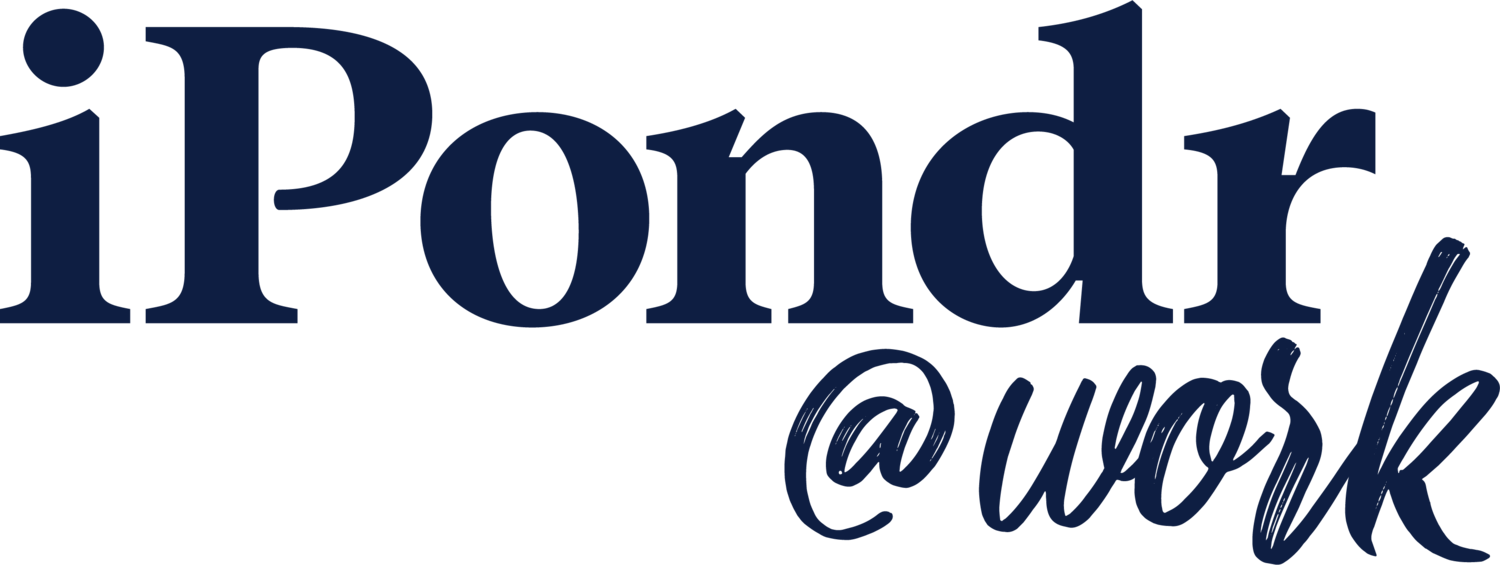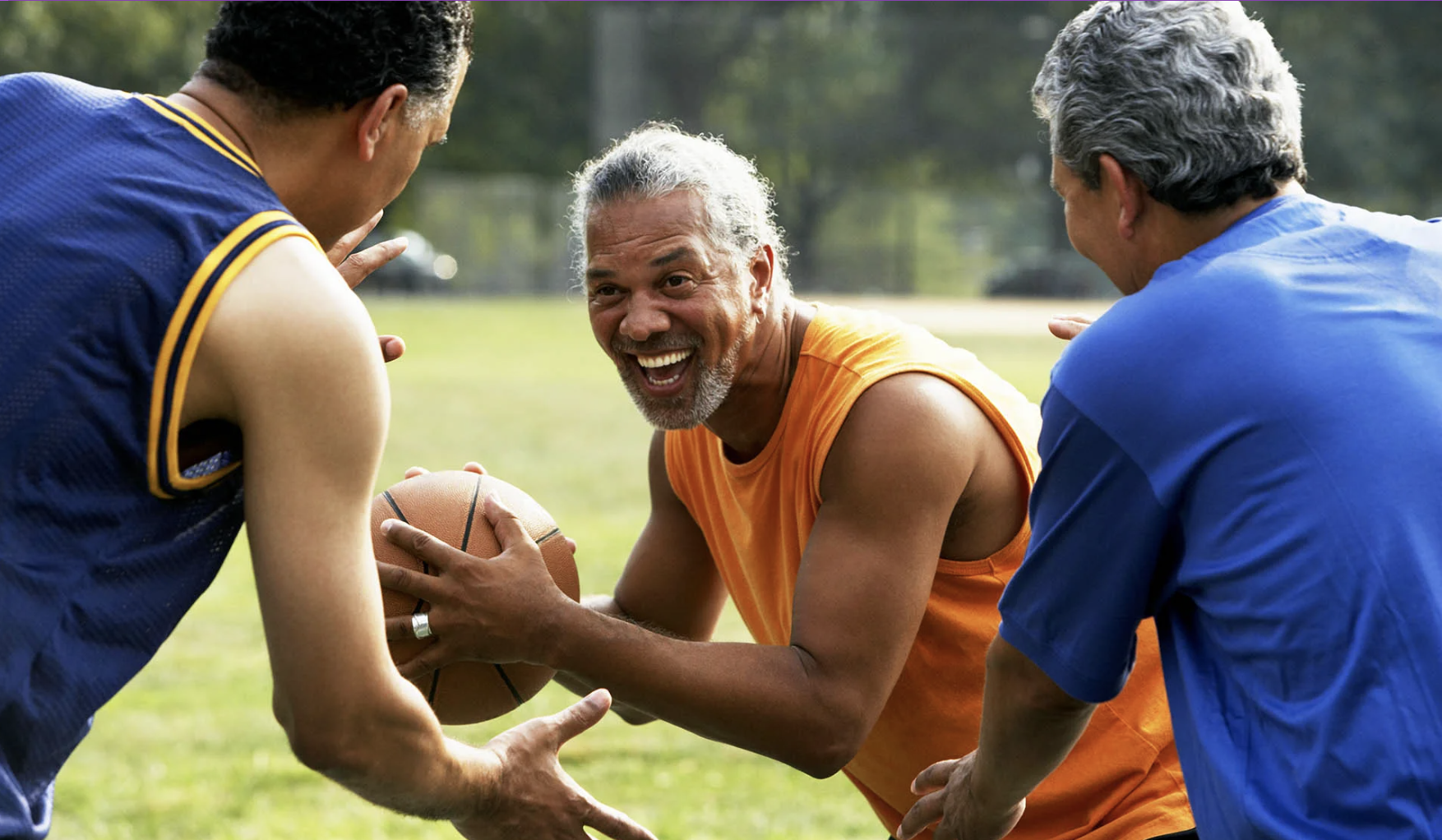Pause and pondr
WHAT CAN YOU OR YOUR LOVED ONES DO TO STAY HEALTHY PAST 50?
As the saying goes, age is just a number. Research shows that keeping healthy and fit past our fifties can be beneficial for years to come. See what fitness looks like over fifty.
DID YOU KNOW?
Physical activity over the age of 50 can be challenging to most. But some continue to compete well after their prime years to maintain health and accomplish life-long goals.
WHAT YOU’LL LEARN
Review key stories on aging well
Assess your relationship with aging
What unique health concerns do people over 50 face?
As we age, the wear and tear that our bodies experience become more apparent, such as joint pains and a slowing metabolism, as well as health issues that many have never had to deal with before. But there are ways to address these new physiological changes.
In fact, for every decade, people face unique health challenges. A primary health concern for women over 50 — menopause — means they face potential bone breaks caused by osteoporosis. Memory loss, vitality issues, and deteriorating vision are among other concerns. For men, add in libido issues and higher stroke concerns.
In addition, adult children may be starting to leave the home, causing some parents emotional stress and feelings of sadness and loss.
Why should we care?
According to a study by Harvard University, just over 34% of the U.S. population is 50 and over, and the numbers of older adults are rising due to the aging baby boomer generation. Meanwhile,Gen X, which numbers around 65 million today, comprises those in their mid-40s and mid-50s.
In the workplace, the number of older workers has grown in the last five decades and is projected to continue to increase, according to the Bureau of Labor Statistics. And despite a large number of those 55 and older leaving the labor force during the pandemic, many analysts expect those older workers to return for several reasons that include saving and preparing for full retirement.
On average, Americans spend a third of their life at work. Having workplace policies and initiatives can help all workers adopt healthier lifestyles and prevent chronic diseases. In fact, adhering to a healthy lifestyle beginning in your 50s, or encouraging family members and friends to do so, can help slow down the effects of aging. And health experts say it’s never too late to start
What can we do to stay healthy past 50 and help others to do so?
Honoring annual physical check-ups is an important part of any 50-plus health plan, according to the Mayo Clinic.
Women, in particular, face a natural aging process called sarcopenia, or the loss of muscle mass. Taking a calcium supplement and eating enough protein reduces the effects of muscle wasting. Also, as women age, they lose the ability to absorb as many nutrients from their food. Getting enough vitamin B-12 is essential.
Perhaps not surprising, exercise is also key. A brisk walk or other weight-bearing movement (jogging, tennis) is recommended daily. Mayo Clinic physicians also encourage a low-stress lifestyle, a balanced diet, not smoking, and getting enough sleep.
In the end, it’s about self-care and feeling and being valued by those around us. Francene Marie Morris, 63, is a longstanding media personality and solopreneur based in Charlotte, N.C. Six years ago, she came up with the idea for her latest venture, My New Strut, which she describes as a “revolutionary self-care movement.” She was turning 59 and realized, before she entered the next decade, that she needed to reexamine her roles as a mother and an employee.
Helping loved ones, friends or colleagues through their transition into midlife can mean extending small gestures. Morris says to make birthday celebrations for the over 50 special. In the workplace, employers can spotlight their 50-plus employees in their campaigns, newsletters, and other communications, she says.
Finally, research also shows that well-thought-out wellness programs that provide physical and mental health benefits in the workplace do make a difference in the lives of employees, boosting overall morale, wellbeing and happiness.
Pondr This
How can we redefine ourselves as we age?
What can we learn about our own healthy aging through observing those older than we are?
Consider the physical or social needs of older community members you know. Is there anything you can do to help?
FOR LEADERS
What kinds of conversations around aging come up in your workplace?
How do you take care of your wellness needs?
What opportunities for wellness and self-care does your workplace offer?
Explore The Stories
BLACK FITNESS OVER 50: A toolkit
fast and fit after 50
The bond of cha-cha, dip and twisting together
Topic Review
We take a look at the benefits of staying healthy and active in your 50s and beyond.
Continue Your Journey
Sixty-three-year old motivational speaker Francene Marie Morris, who advises women about matters that arise during midlife, had advice to share on how to age gracefully:
“As we go through these phases and life changes, we have to have a radical self-care plan,” she says.
From baths and walks to practicing yoga via YouTube or creating your own bedtime stories with positive affirmations, Morris encourages it all. It can even start with using different words to describe our lives as we age. “I don’t like to call it empty-nesting, rather free-nesting,” said Morris, who’s daughter is now 27 and living outside of their family home. “Empty implies that you’re lacking; free-nesters have a license and permission to restart their life,” she says.
In all of her sessions, she also encourages clients to “futurecast.” “I have them write a life script in the form of a movie — any genre. There’s no rule to how you can write the script to your life,” she said. “They visualize what they want and write it down,” she said. “Then we look at how it ends up.”
Another way she guides her clients is to take a great photo. “I encourage people to take a picture of them at their very best, so they can see their potential for the future,” she said. “When you can look at who you are, you can see where you want to go and what you want to do — and do it on your terms.”





